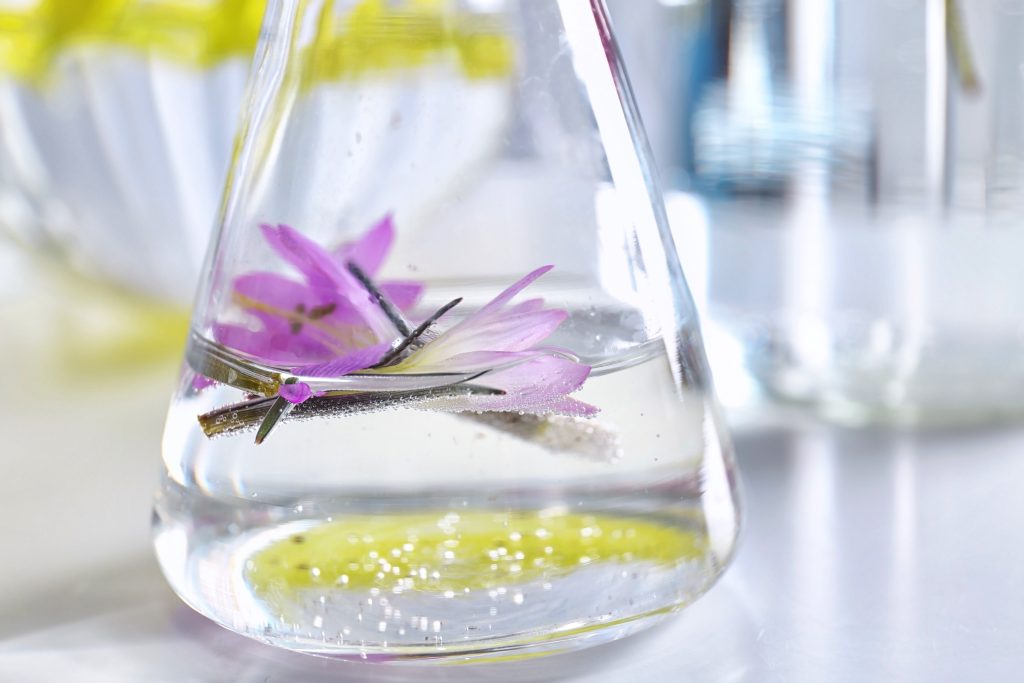Perfumes have been crafted for thousands of years, with early civilizations such as the Egyptians, Greeks, and Romans using aromatic resins, plant extracts, and essential oils in rituals, medicines, and personal adornment. These natural substances, rich in terpenes, were prized for their captivating scents and therapeutic properties. Over centuries, the art of perfumery evolved, incorporating distillation techniques to extract pure essential oils from flowers, woods, and citrus peels. Today, terpenes remain at the heart of perfume formulations; however, their chemical sensitivity poses significant challenges for maintaining both scent quality and consumer safety.
What are terpenes? Definitions, examples and their role in perfume
Terpenes are a diverse class of natural aromatic compounds composed of repeating isoprene units, a five-carbon unit block. They are abundant in essential oils extracted from plants, flowers, and fruits, contributing significantly to the characteristic aromas of these botanical sources. Examples of terpenes found in perfumes include monoterpenes, composed of two isoprene units, such as limonene from citrus and linalool from lavender. Their volatile nature and complex structures enable them to provide unique fragrance notes, from fresh and floral to woody and resinous.
In perfumery, terpenes are not just carriers of scent; they also enhance the overall olfactory experience by interacting with other aromatic molecules. Their sensory contributions, however, come with a challenge: terpenes are chemically reactive. Their multiple double bonds and unsaturated structures make them vulnerable to oxidation when exposed to air, light, or heat during production, storage, or use.
Why do terpenes oxidize? Chemistry, triggers and aromatic vulnerabilities
Terpene oxidation is primarily driven by the reactivity of their unsaturated bonds, which readily interact with oxygen in the presence of light, heat, or trace metals. The process typically begins with the formation of hydroperoxides, which are unstable intermediates that further break down into a variety of oxidized compounds, such as epoxides, aldehydes, ketones, and alcohols. These reactions can be autocatalytic, meaning they accelerate once they start, leading to progressive degradation of the fragrance.
External factors significantly influence the rate of terpene oxidation. Ultraviolet (UV) radiation can initiate free radical reactions, while high temperatures accelerate molecular movement, increasing the probability of oxidative events. Even low concentrations of metal ions, introduced during manufacturing or storage, can catalyze oxidation processes. As a result, perfumes, which usually contain 15-30% fragrance concentrates [1], are particularly vulnerable to oxidation unless proper stabilization measures are taken.
Terpene oxidation and toxicity: from limonene to allergens
The transformation of terpenes through oxidation not only alters their fragrance properties, affecting product quality, but also increases their allergenic potential. Fragrances are today the second most common cause of contact allergy, after nickel, but terpenes’ toxicity is only related to their oxidized form.
Clinical and experimental studies confirm that hydroperoxides formed from oxidized limonene and linalool are among the most potent contact allergens. In patch test studies with over 3,000 dermatitis patients, 5–7% showed positive reactions to oxidized linalool at concentrations used for testing, placing it among the most common fragrance allergens [2].
These findings are significant for perfume manufacturers. Hydroperoxides not only trigger allergic contact dermatitis but also demonstrate high specificity in immune response, meaning even low concentrations can sensitize individuals. Products containing oxidized terpenes may therefore compromise consumer safety and regulatory compliance.
Antioxidant solutions: how tocopherols prevent perfume degradation
To counteract perfume oxidation, formulators can incorporate natural antioxidants that interrupt the oxidative chain reactions. Among the most effective ones are tocopherols. Tocopherols neutralize free radicals by donating hydrogen atoms, thereby stabilizing reactive species and halting the progression of oxidation. This mechanism not only preserves the aromatic quality of perfumes but also reduces the formation of allergenic oxidation products.
Bioxan®, developed by Btsa, is a natural antioxidant for cosmetics and personal care made from natural tocopherols from non-GMO vegetable oil. It is an excellent product for protecting fragrances and perfumes against oxidation while preserving sensory and organoleptic properties. The high antioxidant power of Bioxan® is due to the synergy between its active ingredients, such as tocopherols, squalene, and sterols, which are found naturally in the product.
At Btsa, we provide the perfume industry with advanced antioxidant solutions that enhance stability while meeting stringent safety and environmental standards. We help you ensure your fragrances remain both safe and enduring, satisfying consumer expectations.
Sources
[1] de Groot AC. Fragrances and essential oils. In: John S, Johansen J, Rustemeyer T, et al., editors. Kanerva’s Occupational Dermatology. Cham: Springer; 2018.
[2] Bråred Christensson J. Clinical and experimental studies on oxidized fragrance terpenes as contact allergens [dissertation]. Gothenburg: University of Gothenburg, Institute of Clinical Sciences at Sahlgrenska Academy; 2009.

